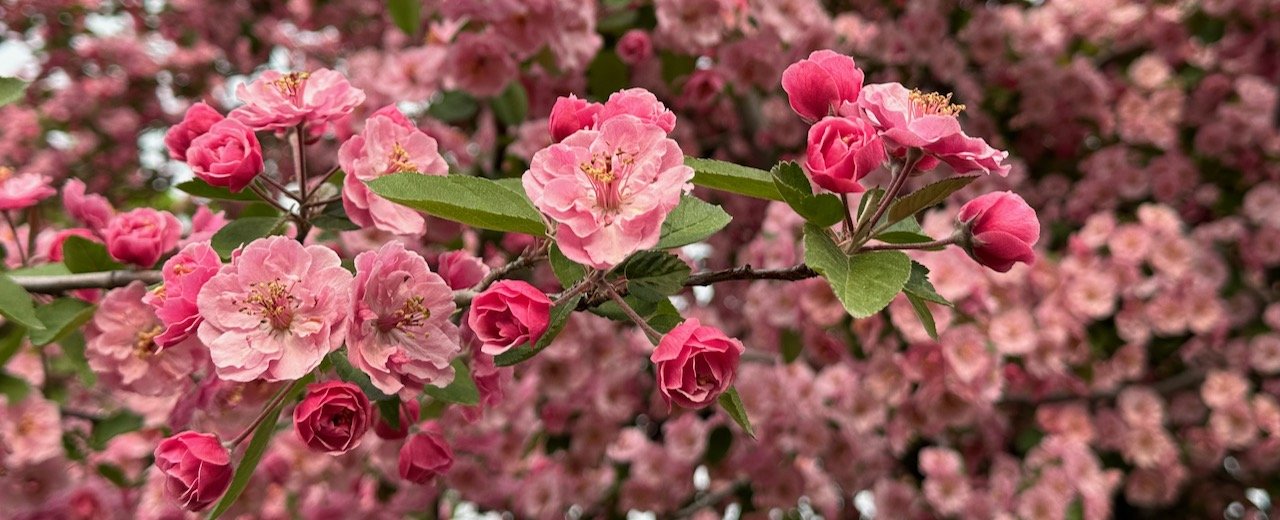Tags
- Acer saccharum
- American Beech Tree
- American Chestnut Tree
- American Elm
- American Forests
- American Hop Hornbeam
- American Linden
- American Oak Tree
- American Sycamore
- American planetree
- Anemone
- Anthracnose
- Apple Tree Borer
- Apples
- Arbor Day
- Arboreturn America
- Arborvitae
- Aspens
- Austrian Pine
- Autumn
- BNI
- Bald Eagle
- Baldcypress
- Barred Owl
- Bellwort
- Betula Nigra
- Betula alba
- Betula papyrifera
- Birch
- Black Cherry
- Black Locust
- Black Oak
- Bloodroot
- Blue Spruce
- Burr Oak
- Business Networking International
- Buttonball tree
- Callery Pears
- Captain
- Carya illinoensis
- Carya ovata
- Catalpa
- Catalpa speciosa
- Cedar
- Cedar Waxwing
- Celtis occidentalis
- Cercis canadensis
- Chalet Garden Centers
- Chicago Botanic Garden
- Chicago summers
Resource Articles from Gilbert Smith, ISA Board Certified Master Arborist
and Lesley Bruce Smith, ISA Certified Arborist

When Does Too Much Water Cause Trees to Die From Drought?
Summer 2020 - Backyard Wisdom
by Gilbert A Smith, ISA Board Certified Master Arborist
Right now, in our forest preserves and our landscapes we see the evidence of too much water causing our trees to die from drought. Let me explain. Trees, like every organism, need to breathe. Of course, we all know that during the day tree leaves use CO2 and give off O2, through the miracle of photosynthesis. What we may not realize is that trees, like us, respire all the time using O2 and giving off CO2. They don't have mouth parts, but they do have openings called stomates in their leaves, lenticels and ray cells in their stems and roots through which they ”breathe”.
May Wisdom from the Trees 2014
Tree of the Month
Sycamore • Platanus occidentalis
O the moonlight’s fair tonight along the Wabash From the fields there comes the breath of new mown hay Through the Sycamores the candle lights are gleaming On the banks of the Wabash, far away”
Maybe you recognize the state song of Indiana
The Sycamore tree is a standout, both because of its large size and it’s mottled white bark, that earns it the names of White Tree and Lacewood Tree. The bark of the Sycamore is too rigid to split or furrow as the tree expands (which is what most other trees do). Instead, “plates” of Sycamore bark break off and fall away revealing lovely, massive, white, mottled trunks.
June - Wisdom from the Trees
June Tree of the Month, American Linden American Linden; Morton Arboretum in Lisle, IL
American Linden; Morton Arboretum in Lisle, IL
This month is when the beautiful Linden trees are in full flower. The American Linden, also known as Basswood or Beetree Linden is a honeybee and flower pollinator favorite because of it’s lovely sweet scent. It is also one of our favorites, so much so that we named two of our puppies after it! The Linden, known by all the above names by North Americans is remembered as a Lime tree by the British. Can you see why scientific nomenclature is a helpful tool?
The Linden is a beloved tree all over the world and in Europe most 16 century manors had a Linden planted on either side of the front door for good luck, which was a custom that travelled the Atlantic as many in the new colonies saluted memories of old and wanted good luck for the future in their new land.
This is a tree that can reach 60’-80’ in the Chicago area and a spread half it’s height. There are many cultivars of this species but often they are plagued with difficulties in structure and so our favorite Linden, daughter of Tilia is the native North American original shown here.
Linden, daughter of Tilia is the native North American original shown here.
It has a rich history and the name Basswood comes from a word meaning fiber from the aboriginal peoples of North America. They discovered that the bark of the Linden  Linden tree flowers, pale white green with sweet scentcould be soaked and separated to be plied into twine and rope and when boiled even made into fiber for weaving for mats and clothing. It is also a favorite of wood carvers. Medicinally, properties of the Linden have included management of fevers, hypertension, indigestion and as an expectorant, to name just a few.
Linden tree flowers, pale white green with sweet scentcould be soaked and separated to be plied into twine and rope and when boiled even made into fiber for weaving for mats and clothing. It is also a favorite of wood carvers. Medicinally, properties of the Linden have included management of fevers, hypertension, indigestion and as an expectorant, to name just a few.


